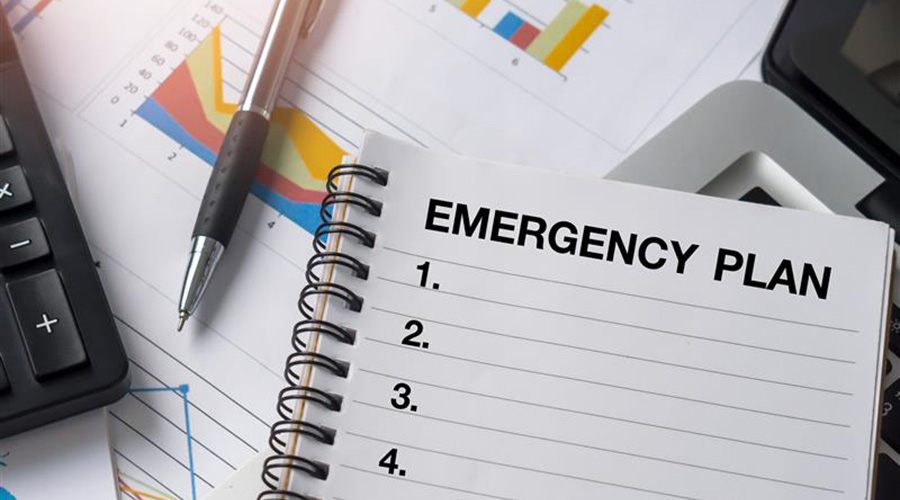A Roadmap to Protecting Facilities and Operations
Education, funding and codes are critical challenges on the journey to resilience. These strategies and tactics can point the way to success
By Dan Hounsell, Senior Editor
Natural disasters are getting more frequent and powerful. Facility managers are under greater pressure than ever to spend their organizations’ precious resources wisely to ensure facilities are safer, healthier and more energy efficient.
Put these two powerful forces together, and it means managers will have time, energy and money to put toward even one more project, even if that project means protecting the very existence of the facility and possibly the organization.
Whether facility managers realize it or not, resilience is quickly moving up the priority list for all types of institutional and commercial facilities. In the face of growing threats that include natural disasters, power outages and pandemics, it is increasingly important that managers and other team members in their organizations prepare their facilities to respond to, survive and return to operations after an emergency.
‘Just starting the journey’
Unfortunately, achieving facilities resilience is a ways away for many facility managers and their organizations.
"A lot of them are just starting that resilience journey,” says Ibbi Almufti, Americas risk and resilience discipline leader at Arup, a sustainable development consulting firm. “We've been working with building owners and end users of buildings for the last decade or more on things like seismic resilience, interestingly, but on climate resilience, maybe only in the last five or six years have those questions started to crop up.”
An organization’s resilience status might depend in part at least on its size and energy intensity.
“Within large facilities or campuses with complex systems and energy-intensive operations, we find a wide range of capacity on resilience,” says Greg Simmons, director in the energy, sustainability and infrastructure segment at Guidehouse, which offers management, technology and risk consulting, referring to facilities where energy spending is a considerable absolute value or a large proportion of overall cost. “Some locations have dedicated engineers and site operators with a deep knowledge of plant or campus systems and an understanding of the available resilience issues and opportunities.” He says other large-site operators have limited experience managing reliability, so their available resources often focus on day-to-day operations and equipment maintenance, and they place less emphasis on strategic planning and risk mitigation.
Slowly, however, building owners and managers in more types and sizes of facilities are making serious inquiries about ways to improve their facilities resilience.
"Initially it's with mission-critical facilities like data center operators,” Almufti says. “But increasingly we are getting the same questions from higher education clients, commercial building owners. It's pretty much the same questions they have, regardless of the sector they're in.
“‘What is the risk to my assets, my business or organization and my people? What do I need to do about it?’ It doesn't matter whether you're a commercial building owner or a campus administrator or whatever it is. It's the same exact question, and the approach is relatively similar, as well.”
Roadblocks and misconceptions
The process of increasing the resilience of facilities and their operations is complex, and owners and managers often face a host of hurdles along the way. The first one often is understanding exactly what resilience is.
"A lot of people conflate resilience and sustainability,” Almufti says. “A lot of people think, ‘We already have our sustainability plans. We're already looking at reducing our carbon emissions. What do you mean climate risk?’
“They don't understand that it's actually talking about the physical impacts of climate-related hazards and what it might do to your business. We're talking about the adaptation side of climate risk, not carbon mitigation. That's part of it — the educational component.”
In part, the education challenge stems from the multi-faceted nature of resilience, given the growing list of potential threats, the many areas of facilities and operations likely to be affected, and the number of interested parties.
“The issue is that they don't know where to start, and it's a pretty overwhelming subject matter,” Almufti says. “Typically, when we're working with our clients, if they're just starting the journey, we have a pretty standard approach where we start with something high level across an organization. What are your potential hazards and hot spots? Then we move into a more detailed assessment that turns into resilience strategies and insights.”
Perhaps the toughest challenge owners and managers need to address centers on money — How much does resilience cost, and what does an organization get for its investment? Again, the size of the organization factors into the answers.
"Our experience suggests that the cost of resilience measures, such as backup generation or battery storage, has been falling,” Simmons says. “Declining prices are great news for large manufacturing operations, data centers and other critical service facilities. The reduced cost of resilience system implementation and improvements to required maintenance should continue to increase the adoption of these technologies.
“However, for small and medium facilities, the cost of resilience systems continues to be a barrier. Many organizations view resilience systems as premium insurance investments that mitigate operational risk but come with material (operating expenses) and (capital expenditures).”
Complicating the process even further are the many companies and organizations that are offering to help facilities improve their resilience.
"It is a very crowded landscape in terms of where to start,” Almufti says. “There are a lot of startups in this space — climate risk analytics vendors. They offer various services, and they're kind of overpromising. So owners or leaders within these organizations need to navigate all this uncertainty.
“Some clients come to us after they've already run a screening-level assessment with one of these climate risk analytics vendors, and they say, ‘What do we do with this data?’ They're having a lot of trouble translating what comes out of those software vendors into actions and actual insights.”
In addition to all of these issues and challenges, owners and managers need to move past a host of myths and misconceptions related to resilience.
"One of the recurring fallacies in reliability planning is that resilience is a one-time effort,” Simmons says. “Best-practice implementation of resilience systems is actually an ongoing activity that demands continuous attention and adaptation. Large manufacturing plants and critical infrastructure facilities are subject to evolving risk, from technological disruption to natural disasters.
“Given the emergent and changing nature of today’s resilience risks, it is vital for facility operators to regularly update response plans to ensure that site mitigations remain effective. By embracing resilience as an iterative and dynamic process, building owners and managers can better safeguard their assets, occupants, and operations.”
Almufti says managers and owners might need to rethink their approach to the role of codes in resilience.
“The building code is one thing we need to educate our clients on,” he says. “The building code gives you a minimum level of life safety. It doesn't protect your assets in terms of minimizing damage and making sure you have business continuity and so on. Even for hospitals in highly seismic regions, for example, the misconception is that the building code protects us from all of that stuff. That's not true.”
Moving toward resilience
For building owners and managers committed to improving the resilience of their facilities, starting the process and maintaining the momentum to complete it are a huge undertaking. To succeed, they will need to commit to seeing the long-term project through. Simmons offers three key points along the way.
"First, a key to the success of any infrastructure project is the early engagement of relevant stakeholders,” Simmons says. “The outcomes of your resilience project will be strengthened by diverse perspectives and expertise.”
Second, he encourages site operators to construct a custom resilience plan that prioritizes measures based on identified risks and available funding resources.
“For most organizations, the implementation of a resilience mitigation strategy is a multi-step process,” he says. “Sizing each step to organizational funding realities will ensure that resilience ambitions align with management’s economic investment criteria.”
The third recommendation focuses on the long-term commitment required to ensure resilience.
“We recommend that building owners and managers continuously monitor and evaluate the effectiveness of their resilience measures. The frequent adjustment of your building resilience strategy will address evolving threats and mitigate emerging challenges.”
Almufti says successful managers will have to address the educational component of achieving long-term resilience early in the process.
“It comes back to education,” he says. “This is newly on the radar for a lot of organizations. Typically, what we've seen is there's maybe one champion within the organization that gets it and says they want to push forward. But they have to educate everyone in their leadership and then the budget holders, which may or may not be different.”
Education also encompasses understanding the standards and codes that are emerging that dictate various aspects of resilience.
"It's also trying to see what is coming out in terms of the mandatory requirements around climate risk,” Almufti says. “Some organizations waiting on the sidelines to see what comes of it before they really kind of dive into the journey.”
Amid the myriad challenges and issues swirling around the goal of ensuring the resilience of facilities and their operations, Almufti says owners and managers need to remember that while the process is complex, the goal is achievable.
“My sense is that people are just overwhelmed by climate risk,” Almufti says. “What we don't want to lose focus on is that there are solutions we can put into place. Sometimes, they're very low-hanging fruit, operational measures that can significantly reduce your climate risks and increase your climate resilience. Don’t be dissuaded by the overwhelming potential of the risk. There are ways of reducing that risk.”
Dan Hounsell is senior editor for the facilities market. He has more than 30 years of experience writing about facilities maintenance, engineering and management.
Related Topics:












